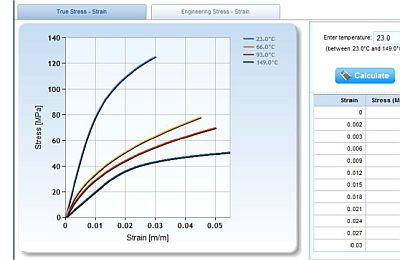
New developments in a database of advanced material properties for CAE use
Pocajt Viktor - Key to Metals AG (Switzerland)

PRESENTATION
Abstract
This paper describes innovative elements in a large database of advanced material properties for metallic materials, and recently polymers and ceramics. This new database, which relies on a proprietary Extended Range methodology that combines property acquisition and assessment, is integrated into the Key to Metals database and aimed at serving the global engineering community with mechanical and physical properties needed for advanced CAE (Computer Aided Engineering) and FEA (Finite Element Analysis) calculations and simulations. The "standard" Key to Metals dataset for a material includes international cross-reference tables, composition, mechanical and physical properties at various temperatures, heat treatment diagrams and more; the main mechanical properties included in the standard dataset are yield stress, tensile stress, hardness, ductility, and Young modulus. While these properties suffice for conventional structural calculations in the elastic range, they cannot fulfil the needs of advanced calculations and simulations in the plastic range, nor suffice for calculations regarding fatigue, fracture mechanics, crack growth, time-related deformation etc. Information on these advanced properties is very hard to find and this evident lack of knowledge about material properties poses one of the highest risks in structural design, accounting for over 29% of structural failures.
According the Extended Range methodology, advanced material properties have been divided to (1) stress-strain curves, (2) flow stress – flow strain curves, (3) cyclic properties, (4) fracture mechanics, and (5) creep properties. The biggest challenge in providing these properties for a large number of engineering materials and service conditions is a general scarceness of experimental data. Besides collecting and consolidating information for over 14.000 materials from over 600 references, a specific set of algorithms has also been developed for streamlining and assessing properties under various conditions (service temperature, heat treatment etc.).
The paper will provide an insight into newly developed algorithms and functionalities, such as statistical approach to fatigue properties, new method for property assessment based on material comparison and new data export functionalities.
